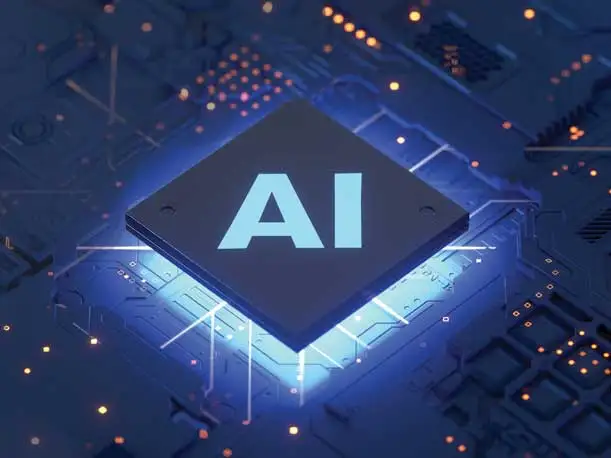Cisco Channel Chief Rodney Clark On Deep AI Investments, Spurring Growth Through Partners
‘This is an amazing time and for Cisco - a company who’s been really, really focused on AI and our portfolio for many years - it’s actually coming together at a time when the industry needs it. We’ve got the infrastructure to power AI, we’ve got the breadth and scale of data, and then we’ve got the ability to secure AI,’ Rodney Clark, Cisco’s channel chief, tells CRN.

Rodney Clark, senior vice president of partnerships and small and medium business for Cisco Systems, is ready to arm partners with what they need to tackle the latest, and arguably largest, opportunity at hand: AI. Now with the $28 billion Splunk deal signed and sealed, Cisco has big plans around AI, cybersecurity, observability and creating new, innovative products, services and capabilities for customers, and it’s going to need partners’ help.
Cisco in November named Microsoft veteran Rodney Clark as its global channel chief. Clark, a tech stalwart, picked up the channel chief mantle from Oliver Tuszik, who had sat in the channel chief seat since January 2018. Since then, Clark’s been meeting with partners, absorbing the magnitude of the portfolio and creating a plan to help partners capitalize on the areas in which they are already experts as a starting point toward building out their own AI practices. Partners, according to Clark, will be key in helping Cisco move fast and win aga coainst the competition in the AI arena.
Clark recently spoke with CRN to talk about the AI opportunity and how Cisco is empowering partners with incentives and specializations. Here are excerpts from the conversation.
And check out what Cisco CEO Chuck Robbins told CRN about the AI opportunity and beating the competition in the April edition of CRN magazine and online here.

How big is the opportunity for solution providers around AI with Cisco as a partner?
This is an amazing time and for Cisco - a company who’s been really, really focused on AI and our portfolio for many years - it’s actually coming together at a time when the industry needs it. We’ve got the infrastructure to power AI, we’ve got the breadth and scale of data, and then we’ve got the ability to secure AI. Those three things become fairly important for customers who are looking at not only how to deploy, but looking at Cisco as a potential solution for AI. The fact that we’ve been deploying AI at scale—we’ve been our own customer for years—lends a lot of credibility. Our job now is to just go and talk about how we frame it and how we think about it. The fact that we take a responsible approach to AI principles and we have a framework around it, the fact that we have this silicon effort that’s been going on for years that now when you look at the importance of Ethernet, networking and capability, [it’s] huge. You look at the Cisco-Nvidia announcement—another really strong push for cloud-based and on-premises AI infrastructure with that GPU cluster on Ethernet infrastructure. And then you look at the scale—the fact that we’ve been powering these networks, we’ve had the IoT platforms, [and] we’ve got hundreds of billions of devices. We’re really in a great position.

What are you doing as channel chief to drive AI growth through partners?
For me, the biggest revelation has been the extent of our portfolio. If you look at our enterprise networking, security, the managed services, collaboration, we’re in a fairly unique position. As a result of this portfolio, our competition in the industry is magnified because, again, we’re across networking, security services, [etc.] and so for me, I look across that portfolio and help our partners and our ecosystem make that natural connection on where they should invest. What we see is when partners invest with us across our portfolio, and they have more than two to three solutions, they’re growing on average 12 percent faster than those who do not. So, my job and my role is to build a set of capabilities that allows them to grow in the natural areas where they have already a core set of competencies and capabilities to create and evolve our programs so that it supports those partners who are not only deep in specific areas of our portfolio, but those who can extend across it, and that also extends to services as well.

For partners interested in starting their own AI practices, where is the natural jumping-off point?
The jumping-off point for our partners is always where they have a core set of strength and investment already. And because we’ve been so invested in our portfolio across AI, it really gives just about every partner in our ecosystem a very logical point to jump in. If they’re in collaboration, they can take an AI approach based on the work that we’ve done around taking background noise out of our Webex tools and platform and call center. If they’re in in observability, they can use and leverage the fact that we’ve had these hundreds of millions of data [points] that we’ve analyzed and assessed, [which] gives partners the ability to jump in there. We’re taking all of that learning and the fact that we’ve had this extensive push throughout our portfolio and working on and building a core set of specializations in AI and for AI that extends all the way from silicon, to software, and across things like ThousandEyes.

Will you and your team make changes to the compensation model or introduce new incentives to help drive AI growth?
Any time you’re in a moment or a period like this where there is this rapid transformation and acceleration, which we all agree that AI is just that, we absolutely have to look at how we are incenting our partners. Are we paying for the outcomes that our customers are wanting? Are we paying for the outcomes that are going to help us grow our businesses? This isn’t anything that’s new and unique to me coming into the role or new and unique to the strategy that we’ll build as a Cisco team together with our partners, it’s just natural. [With our Partner] Advisory Board … this is one of the things that we talked about. Based on the addressable market across all of these areas, AI included, are we really focused on accelerating the right areas? Do we have the right [partner] journeys mapped out for our partners coming into our programs? That’s something that we look at every day and we’re going to continue to do that. Do we have the right specialized specializations that are in place? We feel that we do, and we need also to add something specific to AI. And then, do we have the right investments in place to support the outcomes that we need? That’s work that we're doing as well, so nothing major to announce, but it’s just ongoing work. In this case, because the transformation is accelerating, it also requires us to accelerate our assessment as well. Underpinning all of that is making sure that we continue to support our current business and support our current partners in their profitability and a big part of that is managed services.
What’s your message to partners specific to going after the AI opportunity?
[My message for AI] is the same as the general message. We are here for the success of our customers, and we do that through our investment in partners. That’s No. 1. We’re focused on making sure that things are easier for them and that’s every aspect of how we do business with our partners, from the APIs that we ask them to write to engage in commerce, and new and emerging technologies, to the specializations that we put in place. And then lastly, we are supporting them in this AI journey, and we’re doing that by allowing them to participate and engage in and across our portfolio. That gets back to that statistic that I shared earlier [on partners that have more than two to three solutions growing on average 12 percent faster than those who do not], so we know that there’s profitability there based on that. And we know that AI presents an opportunity for them to continue to grow. So we’re really doubling down there.